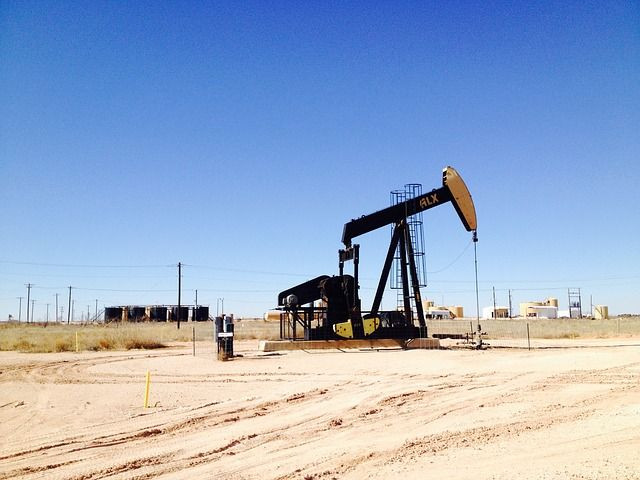Living Near Fracking Sites May Worsen Asthma Symptoms, Increase Number Of Attacks

New research published Monday in JAMA Internal Medicine adds more fuel to the fire concerning fracking’s unintended side-effects on human health with new claims that fracking may worsen asthma symptoms.
Fracking, known as unconventional natural gas development, requires four major phases, all with the purpose of retrieving natural gas (and oil) from previously unreachable veins found deep inside the earth. They involve preparation, drilling, stimulation, and the actual production of gas via wells. The stimulation phase, most commonly associated with fracking, is when highly pressurized water and other chemicals are used to crack open rocks so that natural gas and oil can be better extracted.
Critics have accused fracking companies of poorly safeguarding the building and maintaining of these wells, citing the leakage of fracking fluids into the water supply, and have also noted that the extraction of gas from wells may be unhealthy to surrounding residents, particularly by releasing pollution into the air.
To test these claims of negative health impacts caused by fracking, the researchers, primarily hailing from Johns Hopkins University in Baltimore, studied the electronic health records of 35,508 patients with asthma living in and around Pennsylvania from 2005 to 2012, a major hub of fracking development. They specifically tracked any documented flare-ups of the patients’ asthma, ranging from needing steroid medication for a mild attack to being hospitalized for a severe attack. Lastly, they cross-referenced the incidence of these events with how close the patients lived next to a fracking work site.
They found that those who lived closest to a site, regardless of which phase of development it was in, experienced more asthma-related incidents than did those who lived farthest away. Depending on the severity of attack and the site’s phase of development, the odds of an asthma attack were 1.5 to four times higher for those who lived nearby.
“Ours is the first to look at asthma but we now have several studies suggesting adverse health outcomes related to the drilling of unconventional natural gas wells," said lead author Sara G. Rasmussen, a PhD candidate in the Bloomberg School's department of environmental health sciences, in a statement released by Johns Hopkins. "Going forward, we need to focus on the exact reasons why these things are happening, because if we know why, we can help make the industry safer."
Ultimately, there were 20,749 mild, 1,870 moderate, and 4,782 severe attacks during the study period. Meanwhile, the state saw 6,253 new fracking wells created along the same time, with over 4,500 reaching the stimulation phase.
Like all research, there are limitations to the study’s conclusions. For one, it only took into account the patients’ most recent address at the time of their recorded attack, so it’s possible they may have moved from elsewhere during the study period. The data the researchers used also didn’t have their employment information. Both of these missing dots mean that we can’t be perfectly sure whether where the patients previously lived or worked could have better accounted for the findings. Given how significant and widespread the link between asthma and fracking was in the study, though, it’s unlikely these factors would dramatically change the math.
Since the study only looks at the potential relationship between fracking development and asthma, it can’t pinpoint any direct causes for the increased risk in attacks. But there’s likely more than one reason: Everything from the stress of noisy trucks, to construction that keeps people awake at night, to air pollution may be to blame, since all are potential risk factors for worsening asthma. Out of all four major phases of development, it was the gas production phase that was most associated with frequent mild asthma attacks, though it’s uncertain exactly why. Unlike the other shorter phases of fracking, wells may be in operation for years at a time, extending its potential health hazards.
"We are concerned with the growing number of studies that have observed health effects associated with this industry," said senior author Dr. Brian S. Schwartz, a professor in the department of environmental health sciences at the Bloomberg School. "We believe it is time to take a more cautious approach to well development with an eye on environmental and public health impacts."
As noted by the researchers, several states like New York and countries like the UK have put a kibosh on fracking, though oftentimes only temporarily (until 2017 in Maryland’s case), with government officials citing the need for further research before they can move forward with what’s become a highly profitable industry. Schwartz and his colleagues hope their study and others can highlight the serious worries that need to be addressed before they do.
"Going forward, everyone can learn from Pennsylvania's experience," he said. "State regulatory bodies should use the growing number of health studies to understand the possible environmental and public health impacts of this industry and how to minimize them."
Source: Rasmussen S, Ogburn E, McCormack M, et al. Association Between Unconventional Natural Gas Development in the Marcellus Shale and Asthma Exacerbations. JAMA Internal Medicine. 2016.



























